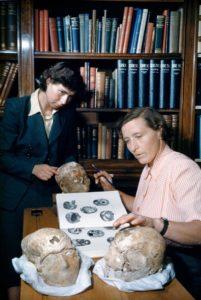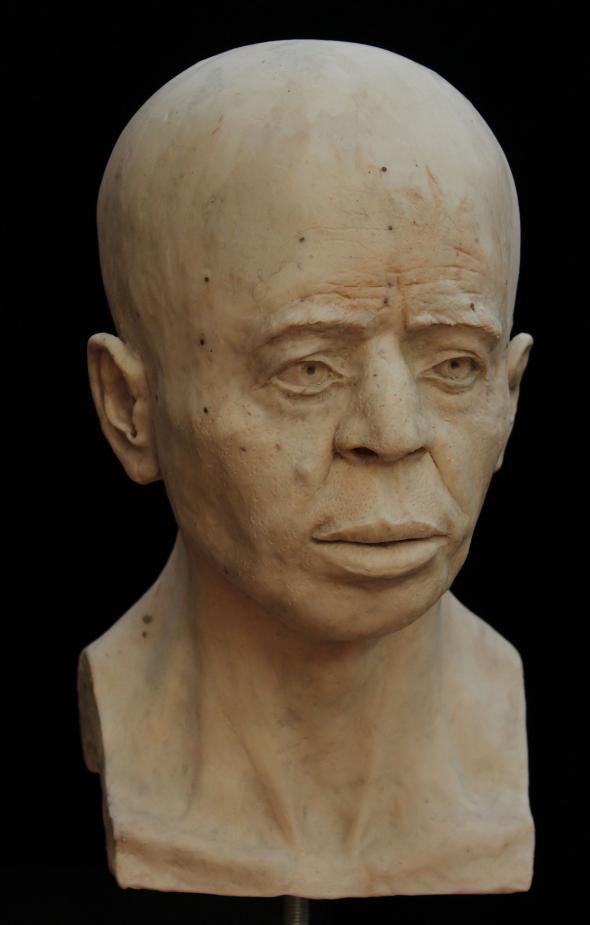British Museum Finally Reveals 3D Printed Face of the 9,500-Year-Old Man Behind the Ancient Jericho Skull
 One of the really cool applications of 3D printing is when it’s used in such a way as to shine a light into the dusty corners of history. It can be used to give a face to a mummy, determine how Australopithecus afarensis Lucy really died, and for projects inspired by the Terracotta Army. Recently, facial reconstruction experts in Europe released digital 3D facial images of Robert the Bruce, and now researchers with the British Museum have revealed the face of the man behind the 9,500-year-old Jericho Skull. They reverse-engineered the ritual practice that created the artifact, which is considered to be the oldest portrait in the museum’s vast collection. The truncated human skull, with sea shells for eyes and covered in old plaster, has been sitting in a display case since 1954, after it was excavated near the modern West Bank city of Jericho.
One of the really cool applications of 3D printing is when it’s used in such a way as to shine a light into the dusty corners of history. It can be used to give a face to a mummy, determine how Australopithecus afarensis Lucy really died, and for projects inspired by the Terracotta Army. Recently, facial reconstruction experts in Europe released digital 3D facial images of Robert the Bruce, and now researchers with the British Museum have revealed the face of the man behind the 9,500-year-old Jericho Skull. They reverse-engineered the ritual practice that created the artifact, which is considered to be the oldest portrait in the museum’s vast collection. The truncated human skull, with sea shells for eyes and covered in old plaster, has been sitting in a display case since 1954, after it was excavated near the modern West Bank city of Jericho.

In this 1953 National Geographic photo, archaeologist Kathleen Kenyon (right) and technician Cecil Western examine Neolithic plaster skulls recently excavated at Tell es-Sultan, near Jericho. The British Museum’s Jericho Skull can be seen in the rear.
The Jericho Skull is one of seven ornamented, plaster-covered Neolithic skulls found by archaeologist Kathleen Kenyon in 1953 at the Tell es-Sultan site, and the discovery was reported in National Geographic later that year. She described the exciting moment when the first skull was discovered to readers of the magazine, explaining that no other archaeologists in the world “had even guessed at the existence of such a work of art.”
Kenyon wrote, “We realized with a thrill of discovery that we were looking at the portrait of a man who lived and died more than 7,000 years ago.”
All seven skulls had been originally stuffed with soil, in order to support the delicate facial bones, before wet plaster was used to create individual features, like ears and noses; some skulls even had traces of paint on them. Researchers agree that ornamented skulls like these represent some type of ancestor worship, but little is known about the people who were immortalized in plaster thousands of years ago.
The skulls were sent to museums all over the world for continued studies, and the Jericho Skull was sent to the British Museum. But though they tried, they weren’t able to discern any important information about the skull. Many physical details from the plaster that covered the skull had been erased by the passage of time, and a traditional X-ray scan, which couldn’t differentiate between the bone and plaster densities, looked like “a white blob on an x-ray plate,” according to Alexandra Fletcher, Raymond and Beverly Sackler Curator for the Ancient Near East, who was in charge of the museum’s reconstruction project.
Some other Neolithic plaster skulls have been examined digitally, but the skeletal human remains inside the Jericho Skull are now the first to be 3D printed and forensically reconstructed. Researchers were finally able to see the remains under the plaster after the skull underwent a micro-CT scan in 2009, and they were able to recreate the face of the person inside the Jericho Skull. As it turns out, it’s a man in his forties, with a broken nose.
According to a recent National Geographic article, “The scan revealed an adult cranium (the lower jaw had been removed, more likely male than female. The septum was broken, and rear molars were missing. A hole had been carved in the back of the cranium so it could be packed with soil, and the scans even illuminated 9,500-year-old thumbprints from where someone eventually sealed the hole with fine clay.”
 In 2016, the British Museum was able to learn even more about the man inside the Jericho Skull, once they used the CT scanning data to create a digital 3D model of the cranium. For example, the scans suggested the man had a broken nose: the 3D model showed just how severe the damage was. Fletcher’s research team decided to keep going, and created a physical model of the Jericho Skull using a 3D printer. Then they teamed up with expert forensic reconstruction firm RN-DS Partnership, which offers a range of creative and analytical image-based skills in order to support the work being done in the archaeological, forensic, and medical fields.
In 2016, the British Museum was able to learn even more about the man inside the Jericho Skull, once they used the CT scanning data to create a digital 3D model of the cranium. For example, the scans suggested the man had a broken nose: the 3D model showed just how severe the damage was. Fletcher’s research team decided to keep going, and created a physical model of the Jericho Skull using a 3D printer. Then they teamed up with expert forensic reconstruction firm RN-DS Partnership, which offers a range of creative and analytical image-based skills in order to support the work being done in the archaeological, forensic, and medical fields.
The forensic experts used the 3D printed cranium from the British Museum, and the lower jaw model of a different Neolithic man, to reconstruct the the facial musculature onto the digitally created Jericho Skull remains, incidentally using a similar process to the way people had made cheeks, ears, and lips from plaster and put them onto the original human bone over 9,000 years ago.
Fletcher explained, “It’s as if we did the Neolithic process in reverse.”
If you happen to be planning a visit to the British Museum, the original Jericho Skull and its facial reconstruction will be displayed next to each other in the “Creating an ancestor: the Jericho Skull” exhibit. But hurry, the exhibit will only be up until February 19, 2017! Discuss in the Jericho Skull forum at 3DPB.com.
[Source/Images: National Geographic]
Subscribe to Our Email Newsletter
Stay up-to-date on all the latest news from the 3D printing industry and receive information and offers from third party vendors.
You May Also Like
Profiling a Construction 3D Printing Pioneer: US Army Corps of Engineers’ Megan Kreiger
The world of construction 3D printing is still so new that the true experts can probably be counted on two hands. Among them is Megan Kreiger, Portfolio Manager of Additive...
US Army Corps of Engineers Taps Lincoln Electric & Eaton for Largest 3D Printed US Civil Works Part
The Soo Locks sit on the US-Canadian border, enabling maritime travel between Lake Superior and Lake Huron, from which ships can reach the rest of the Great Lakes. Crafts carrying...
Construction 3D Printing CEO Reflects on Being Female in Construction
Natalie Wadley, CEO of ChangeMaker3D, could hear the words of her daughter sitting next to her resounding in her head. “Mum, MUM, you’ve won!” Wadley had just won the prestigious...
1Print to Commercialize 3D Printed Coastal Resilience Solutions
1Print, a company that specializes in deploying additive construction (AC) for infrastructure projects, has entered an agreement with the University of Miami (UM) to accelerate commercialization of the SEAHIVE shoreline...






























